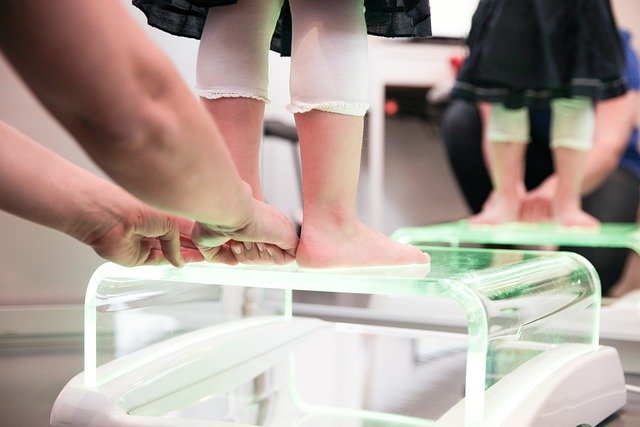Nail Fungus: What It Is, What Causes It, and How to Manage It
Nail fungus, medically known as onychomycosis, affects millions of Americans each year and represents one of the most common nail disorders encountered by healthcare providers. This persistent condition occurs when fungi penetrate the nail bed and surrounding tissue, leading to visible changes in nail appearance, texture, and overall health. Understanding the nature of nail fungus, its underlying causes, and available management strategies can help individuals make informed decisions about treatment and prevention.

What Does Nail Fungus Look Like?
Identifying nail fungus early can significantly improve treatment outcomes. The infection typically begins as a small white or yellow spot under the tip of the fingernail or toenail. As the fungal infection progresses deeper into the nail, it causes several distinctive changes. The affected nail may become thickened, brittle, and crumbly at the edges. Color changes are common, with nails turning yellow, brown, or even black in some cases.
The infected nail often separates from the nail bed, a condition called onycholysis, creating a gap that can trap debris and bacteria. Toenails are more frequently affected than fingernails, particularly the big toe, due to the warm, moist environment inside shoes. The nail surface may develop a rough, uneven texture, and in severe cases, the nail may completely deteriorate or fall off.
The Difference Between Nail Fungus and Other Nail Problems
Many nail conditions share similar symptoms with fungal infections, making accurate diagnosis crucial for effective treatment. Psoriasis can cause nail thickening, pitting, and discoloration similar to fungal infections, but typically affects multiple nails simultaneously and may be accompanied by skin symptoms. Bacterial infections usually develop more rapidly than fungal infections and may involve pain, swelling, and pus formation around the nail area.
Trauma-related nail changes, such as bruising or damage from tight shoes, can cause discoloration but typically affect the nail uniformly rather than starting from one edge. Ingrown nails cause pain and swelling around the nail borders but don’t typically involve the nail plate itself. Contact dermatitis from nail products can cause inflammation and changes in nail appearance, but symptoms usually resolve once the irritating substance is removed.
Why Avoid Picking or Covering Infected Nails
Attempting to pick, cut, or manipulate infected nails can worsen the condition and lead to additional complications. Picking at infected nails can spread the fungus to other nails or cause secondary bacterial infections. The damaged nail bed becomes more susceptible to further fungal penetration, potentially prolonging the infection and making treatment more difficult.
Covering infected nails with nail polish or artificial nails creates an even more favorable environment for fungal growth by trapping moisture and reducing air circulation. Many antifungal treatments require direct contact with the infected nail, and covering the nail can prevent medications from reaching the affected area. Additionally, nail polish can mask changes in nail appearance that might indicate treatment progress or the need for medical intervention.
What Causes Nail Fungus?
Nail fungus develops when various types of fungi gain access to the nail bed through small cuts, cracks, or separations between the nail and nail bed. Dermatophytes are the most common culprits, but yeasts and molds can also cause infections. These organisms thrive in warm, moist environments, making public swimming pools, locker rooms, and shower facilities common sources of exposure.
Several factors increase the risk of developing nail fungus. Age plays a significant role, as reduced blood circulation and slower nail growth in older adults create conditions favorable for fungal growth. Diabetes, immune system disorders, and circulation problems can impair the body’s ability to fight infections. Excessive sweating, wearing tight-fitting shoes, walking barefoot in public areas, and having athlete’s foot all increase exposure risk and create environments conducive to fungal growth.
Treatment Options and Typical Cost Range
Healthcare providers offer several treatment approaches for nail fungus, ranging from topical medications to oral antifungal drugs and procedural interventions. Topical treatments include prescription antifungal lacquers, creams, and ointments that are applied directly to the infected nail. These treatments are generally less expensive but may require longer treatment periods and have lower success rates for severe infections.
Oral antifungal medications like terbinafine and itraconazole are often more effective, particularly for multiple nail infections or severe cases. Laser therapy and photodynamic therapy represent newer treatment options that show promise for resistant cases. Some providers also offer nail removal procedures in severe cases where conservative treatments have failed.
| Treatment Type | Provider | Cost Estimation |
|---|---|---|
| Topical Antifungal (Prescription) | Dermatologist/Podiatrist | $50-150 per month |
| Oral Antifungal Medication | Primary Care/Specialist | $200-400 total course |
| Laser Therapy | Podiatry Clinics | $500-1,200 per treatment |
| Surgical Nail Removal | Podiatrist/Dermatologist | $300-800 per procedure |
Prices, rates, or cost estimates mentioned in this article are based on the latest available information but may change over time. Independent research is advised before making financial decisions.
The success of treatment depends on various factors including the extent of infection, patient compliance with treatment regimens, and underlying health conditions. Most treatments require several months to show significant improvement, as healthy nail growth must replace the infected nail tissue. Prevention strategies, including proper foot hygiene, wearing breathable footwear, and avoiding barefoot walking in public areas, remain crucial for preventing reinfection and initial occurrence of nail fungus.
This article is for informational purposes only and should not be considered medical advice. Please consult a qualified healthcare professional for personalized guidance and treatment.




